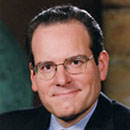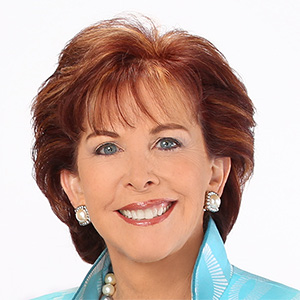Andrea Felsted: The '90s are back -- and so Is The Gap
Published in Business News
If your ‘90s look included a pair of Gap khakis or an iconic blue and white logo sweatshirt, you’re not alone. But the brand that was once America’s uniform has struggled for almost two decades — until now.
Gap Inc. has catapulted its namesake brand into the cultural conversation once more. Now it must turn buzz into booming sales with more stylish products, and, crucially, items that consumers are prepared to pay full price for.
The signs are certainly encouraging. On Thursday, the company raised its forecast for full-year net sales, operating profit and gross margin — the difference between what goods cost a retailer and what it sells them for. The shares rose as much as 17.5% on Friday.
There is no denying that the company, whose heyday was in the 1990s and early 2000s under former Chief Executive Officer Mickey Drexler, is connecting with shoppers again.
Credit must go to current CEO Richard Dickson, the former Mattel Inc. president and COO who joined Gap in August of last year.
One of his early decisions was to hire Zac Posen, the fashion designer best known his stint as a judge on Project Runway, as Gap’s creative director and top designer at family-friendly Old Navy.
Since joining the company early this year, Posen has done impressive work raising Gap’s profile. The label burst back onto the scene in May, when Posen dressed Oscar-winning actress Da’Vine Joy Randolph in a stunning denim gown for the Met Gala. Later that month, he created a white shirtdress for star Anne Hathaway, which quickly went viral.
More recently, Posen dressed Wicked’s Cynthia Erivo in a dramatic black dress for the CFDA Fashion Awards, guaranteeing acres of publicity given the hype around the movie, which was released last week.
This has been augmented by a series of smart collaborations, including tie-ups with Doen — best known for its floaty cottagecore dresses — and Cult Gaia, a Los Angeles label responsible for the viral bamboo Ark bag.
On-point marketing campaigns, including a denim commercial featuring Australian singer and actor Troye Sivan, underline the sense that Gap has found its mojo again.
It’s all helped the brand become a cultural touchstone once more, a status it last enjoyed during Drexler’s tenure. After years in the fashion wilderness, it’s suddenly OK to shop at the Gap again.
This has translated into the division’s fourth consecutive quarter of same-store sales growth. Some of the boost came from consumers earning over $100,000, who are freshly willing to give the company’s combination of style and value a try, Dickson told investors on Thursday.
The pivot reminds me of what has happened at Marks & Spencer Group Plc, the British main street stalwart traditionally known for its prepared meals and underwear. (U.S. shoppers may know the company from its selection of food gifts available at Target Corp.)
After being boycotted by British fashionistas for the best part of 20 years, its wardrobe staples have been discovered by a new generation of shoppers. As with Gap, the stigma of shopping there has been well and truly banished.
M&S has employed many of the same marketing strategies as Gap. But a key plank of its renaissance has been making its products more stylish, while holding on to its accessible price points.
Gap should take a page from its playbook for the next phase of its turnaround.
It has already made some progress. Gap jeans, including the baggy cuts promoted in the Sivan ad — but also barrel, bootcut and skinny — are winning fans. The brand’s affordability gives it an advantage here: Shoppers can buy into the new silhouettes without breaking the bank.
Old Navy also looks better, too — both in its womenswear, with stand-out pieces including sequined separates and colorful padded jackets, and in children’s clothes, which have gotten more fashionable.
But there is more work to be done, particularly with some of Europe’s best retailers expanding in the U.S. Dickson told investors that Posen was now concentrating on sharpening the company’s offerings; for example, making clothing fit better and helping to improve the experience in stores. Meanwhile, a major focus for Old Navy is activewear, where it’s already a top-five player.
To build on its momentum, Gap could do even more to tap into excitement about Posen’s catwalk creations. A version of Hathaway’s white shirtdress went on sale shortly after she wore it — and sold out almost immediately. As Posen dresses more celebrities, tying these outings more closely to in-store selections would be useful. This could be by dressing more celebrities in designs that, like Hathaway’s, are also sold in stores. Alternatively, it could capitalize on viral moments by displaying and marketing existing ranges with reference to the brand’s famous fans.
These kind of enticements should help get more consumers into stores and increase sales without — and this is essential — resorting to markdowns or other special offers.
Discounting does seem to have been going in the right direction. In early November, Gap’s promotions were flat compared with last year, with Old Navy’s slightly lower, according to analysis by Stacey Widlitz of SW Retail Advisors, who tracks markdowns in the U.S. and Europe. This is all the more impressive given the warm East Coast autumn that dragged down clothing sales at some retailers, including Old Navy. That discipline helped the company increase its third quarter operating margin by 2.7 percentage points, the highest level for this fiscal quarter in seven years.
Gap and Old Navy may never be without special offers. Eye-catching promotions are a way to signal value to consumers, something that they look for, especially at Old Navy, according to a survey from Bloomberg Intelligence’s Mary Ross Gilbert. But that shouldn’t mean a sea of red markdown tickets in stores.
Gap’s journey from has-been to hot is a welcome shift. Sustaining the progress on the sales and profit lines will determine whether this revival has staying power, or is just another fleeting retro trend.
©2024 Bloomberg L.P. Visit bloomberg.com/opinion. Distributed by Tribune Content Agency, LLC.











Comments